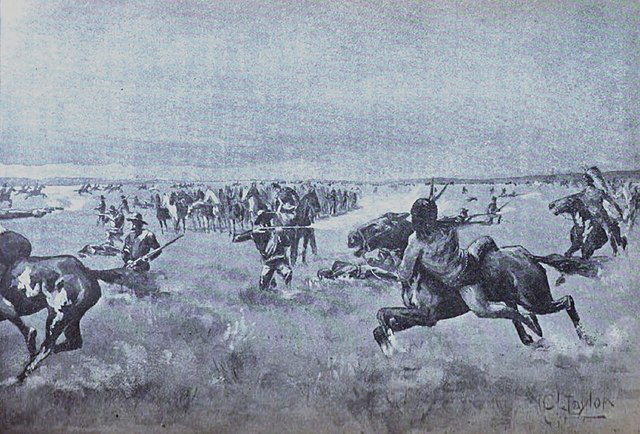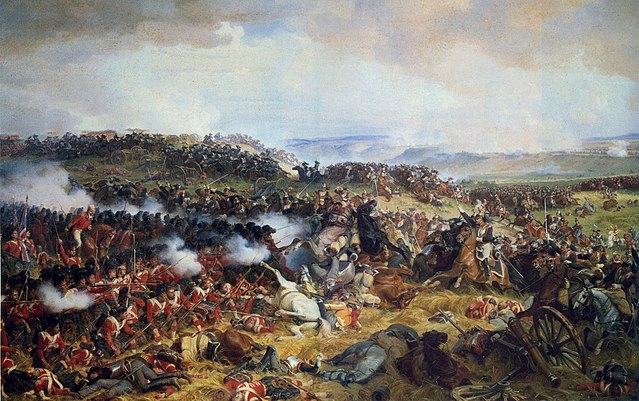Battle of the Saline River
The Battle of the Saline River in August 1867 was one of the first recorded combats of the Buffalo Soldiers of the U.S. 10th Cavalry. This battle occurred 25 miles northwest of Fort Hays in Kansas near the end of August 1867.[see discussion]
Battle of the Saline River
"Wounded and lifted on Horse"- A painting by C. Taylor from the book "Ups and Downs of an Army Officer" written by George Augustus Armes. The painting describes when the then Captain Armes was wounded in the hip and lifted up on a horse during the Battle of the Saline River in August 1867
An infantry square, also known as a hollow square, was a historic close order formation used in combat by infantry units, usually when threatened with cavalry attack. To deploy its weapons effectively, a traditional infantry unit would generally form a line; but the line was vulnerable to more nimble cavalry, which could sweep around the end of the line, or burst through it, and then attack the undefended rear or simply sweep along the line attacking the individual footsoldiers successively. By arranging the unit so that there was no undefended rear or flank, an infantry commander could organise an effective defense against cavalry attack. With the development of modern firearms and the demise of cavalry, the square formation is now considered obsolete.
A depiction of a Napoleonic-era British infantry square at the Battle of Quatre Bras, Belgium, 1815.
Infantry of the French Revolutionary Army in square formation, under attack by Chouan rebels at the Battle of Rocher de La Piochais, 21 December 1795.
The charge of the French Cuirassiers at the Battle of Waterloo against a British square.
Egyptian Mamluk cavalry charges a French infantry square during the Battle of the Pyramids, 1798.





